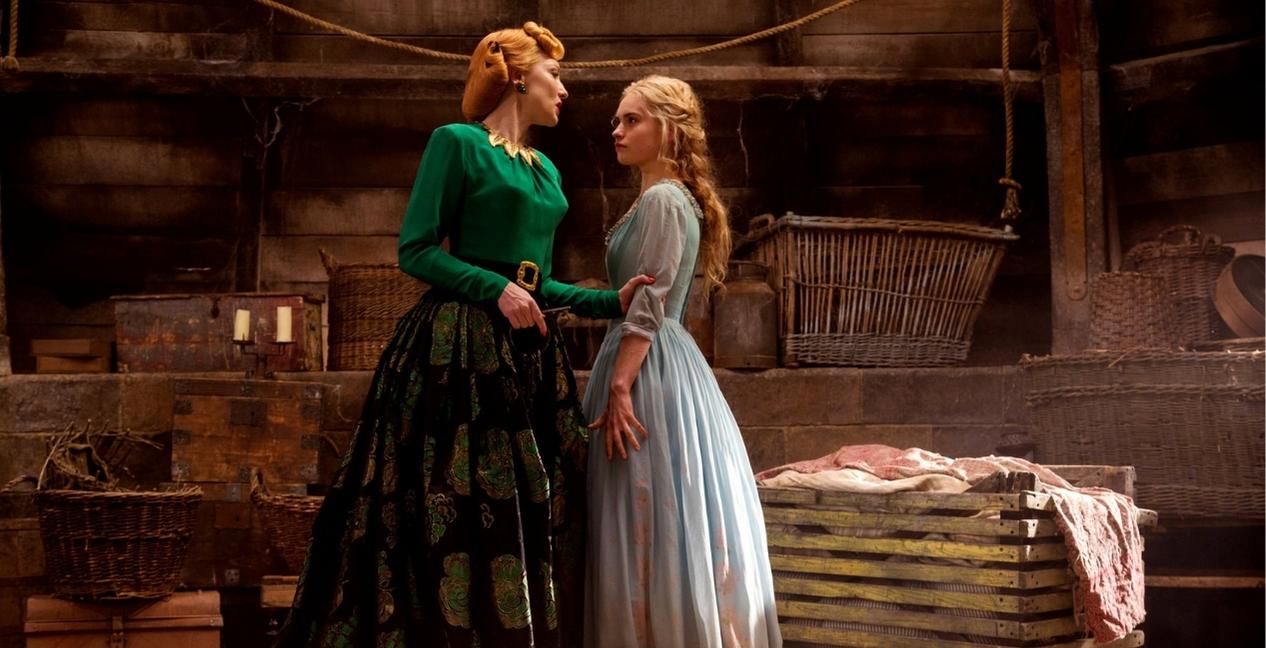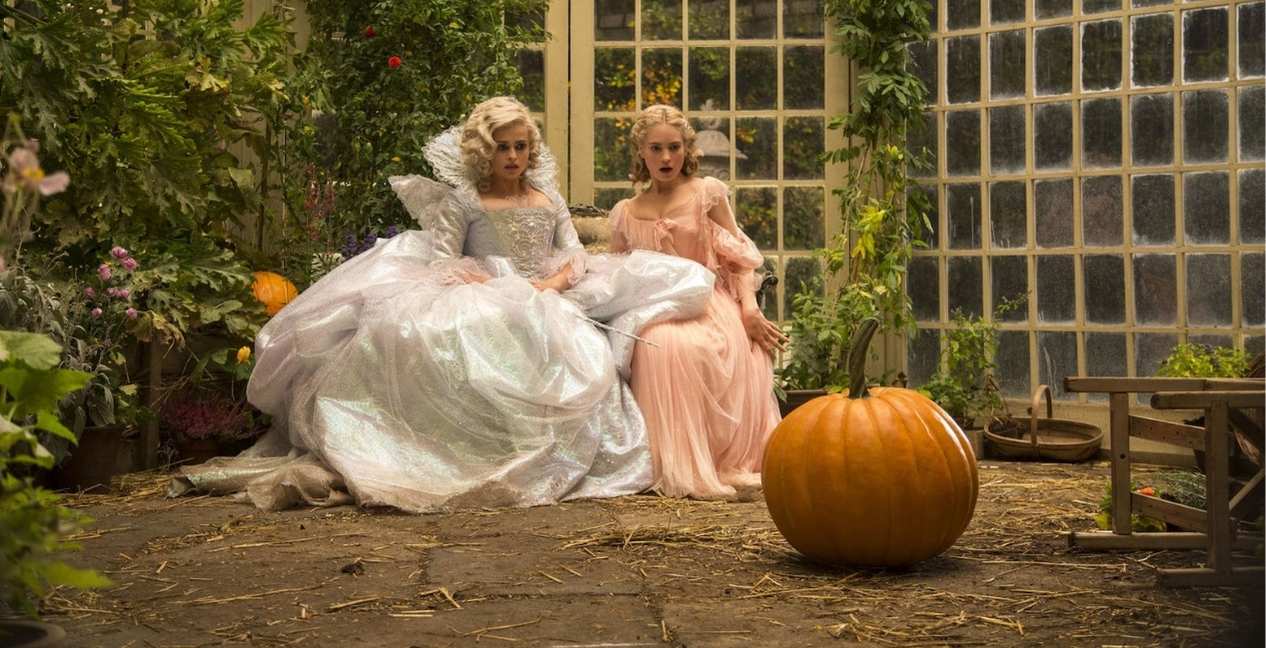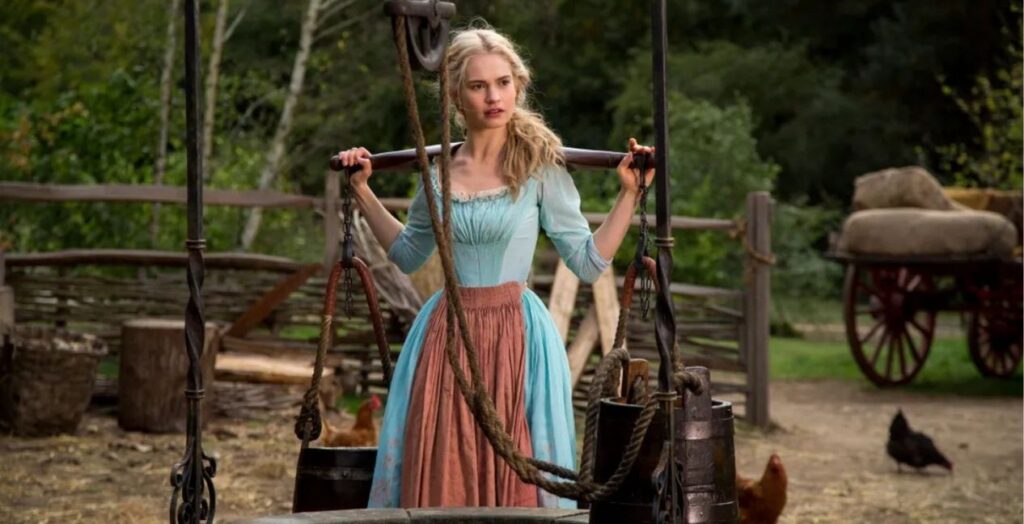Cinderella (2015) was supposed to herald a new age of glory for Disney. Fixated on reinvigorating its IP for a modern audience, the media empire has spent ten years pumping everything it has into its live-action adaptations, with each new addition, like Pinocchio and The Lion King, presenting a decline in quality. In pursuit of capitalistic gains and fulfilling the bottomless appetite of shareholders, Disney has forgotten what made its work so special in the first place—childish whimsy and, most importantly, magic. Hot off the fresh dud that was Disney’s Snow White, it was an easy enough decision to revisit the film that set a high bar for the adaptations that came after it.
Chris Weitz’s screenplay tackles the story chronologically, starting from Cinderella’s childhood rather than the day of the ball invitation, like the original animated film. Focusing on Cinderella’s origins fit with the trend of origin movies a decade ago, and is more in line with the storytelling format.
Featuring a soothing voiceover from Helena Bonham Carter, it’s easy to imagine yourself slipping into the fairytale, with the romantic colour palette further aiding the eye and slipping us into this feeling of timelessness. With young Cinderella surrounded by the love and support of her parents early on, portrayed in subtle earnest by Ben Chaplin and Hayley Atwell respectively, the stage is better set for the audience to understand all Cinderella loses.
This becomes clear when Cinderella loses her mother to illness as a child. As a parting gift of wisdom, she instills in her young daughter the message, “Have courage and be kind,” which Cinderella carries with her into adulthood. With each obstacle encountered, she deploys this arguably too-repetitive mantra to remind her (and the audience) that sometimes, the best resistance is to choose kindness.
However, even Lily James’ Cinderella cracks under the coldly calculating grip of the femme fatale-styled Lady Tremaine. No CGI is needed here to amplify Tremaine’s evil. All it takes is the glacial squint of Cate Blanchett’s gaze and some clever film noir lighting to raise one’s hackles.
The tension between Lily James and Cate Blanchett makes Cinderella (2015) pop.

But kindness always triumphs over cruelty in these stories. James and Blanchett are well cast as opposing forces and their respective archetypes. Both characters see each other clearly for who they are, presenting a delicious friction. Through Lady Tremaine, the audience and Cinderella see what could be for a person without love, serving as an ample warning. And when Cinderella’s arc ends, the benefits of kindness triumphing against all odds ring clear.
One of the more drastic changes to the original Disney story is the wise decision to expand on the relationship between our heroine and the Prince, played with bright blue-eyed intensity by Richard Madden. Embracing the meet-cute trope in the woods, this simple addition to the story lays the groundwork for the couple’s inevitable attraction at the Ball.
Once at the Ball, Weitz’s story finds ways to allow the couple alone time without merely waltzing for hours. As much as this is a fairytale, it is also a romance for both younger and older generations of moviegoers, and the romance here is far more satisfying than its predecessor.
Speaking of satisfying, director Kenneth Branagh is almost a perfect fit for tackling adaptations. Whether tackling Shakespearian pieces like Much Ado About Nothing, tackling Thor‘s origin story in the MCU, fumbling Frankenstein, or in more recent years, adapting Agatha Christie’s novels with mixed success, he is no stranger to this genre of work.
There’s a timeless quality to the visuals and production that seldom falters, with Branagh nudging the direction of the dialogue to evoke both laughter and wonder. It allows supporting characters to take center stage, with blink-and-you-miss-it moments of hilarious delivery.
Once the film moves into ultra-CGI territory, the magic fades.

Where the magic loses its lustre is, ironically, when Bonham Carter pops up as the Fairy Godmother. Leading up to this point, Cinderella (2015) dabbled in the idea of magic rather than showing it off. However, once magic is unleashed, CGI takes over in a less satisfying way and shows Disney’s earliest problems with CGI in these live-action adaptations. In Branagh’s more grounded approach to the fairytale, the magic is glaringly awkward in execution when it fully swings into its digital effects rather than choosing to fuse practical with digital effects.
Thankfully, James’s earnest efforts in physical comedy with Bonham Carter, with both slamming their faces in ridiculous positions and tumbling about, and the grand ball gown transformation, salvage this section of the film. The transformation itself is simple enough, but the camera’s steady focus on James’s swirling builds the moment up. As the dress reveals itself, the moment effortlessly unlocks one’s inner child.
Ten years later, the ball gown design from costume designer Sandy Powell still stands as arguably one of the best live-action Disney Princess gowns featured onscreen. And when James’s Cinderella stands proud in the new dress, it is easy to believe she is destined to be a princess.
Revisiting Cinderella (2015) is a painful reminder of how Disney has waffled in revising its works, sometimes making things more complicated than necessary to figure out its audience. We’ve watched Disney spend the decade trying to make their female characters “not like other girls,” lean too hard into CGI as a placeholder for fulfilling fantastical visuals, or completely miss the point of what they’re adapting. Sometimes, it’s better to keep things simple and never forget what made a story great in the first place.
Cinderella (2015) never forgets its message or the magic its story and heroine hold. If Disney remembers what magic is, maybe they can turn their live-action venture around.







